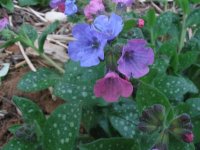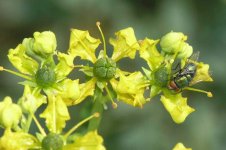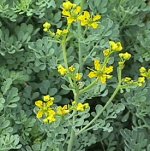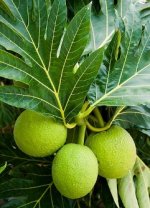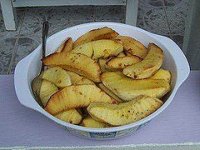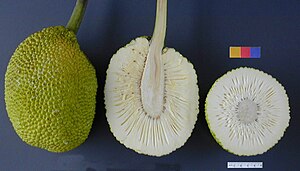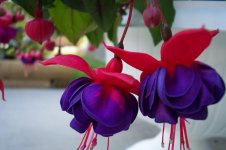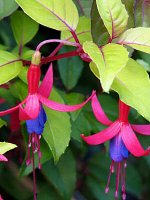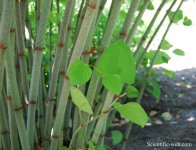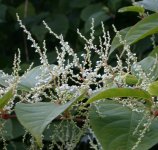You are using an out of date browser. It may not display this or other websites correctly.
You should upgrade or use an alternative browser.
You should upgrade or use an alternative browser.
مسابقه *** هركي گفت اين چه گياهيه ...؟
- شروع کننده موضوع گلابتون
- تاریخ شروع
خیر!!!از اون خانواده اي هست كه پيچك توشونه؟
آفرین خانوادش را درست حدس زدید...از بوراجیناسه؟
Pulmonaria longifolia ''آفرین خانوادش را درست حدس زدید...
جنسش درسته ولی گونه اش این نیست...Pulmonaria longifolia ''
[h=1]Pulmonaria officinalis[/h]جنسش درسته ولی گونه اش این نیست...
آفرین حالا درست شد، توضیحاتش را هم بفرمائید و سوال بعد را مطرح کنید...Pulmonaria officinalis
بپذیرید
بپذیرید
بپذیرید
Kingdom:Plantae(unranked):Angiosperms(unranked):Eudicots(unranked):AsteridsOrder (unplaced)Family:BoraginaceaeSubfamily:BoraginoideaeGenus:Pulmonaria
L.Pulmonaria officinalis
Lungworts are perennial herbs that form clumps or rosettes. They are covered in hairs of varied length and stiffness, and sometimes also bear glands. The underground parts consist of a slowly creeping rhizome with adventitious roots. Flowering stems are unbranched, rough, covered with bristly hairs, usually not exceeding 25–30cm, with a few exceptions (P. mollis, P. vallarsae). The stems are usually upright, or slightly spreading.
The leaves are arranged in rosettes. The blades are usually large, from narrowly lanceolate to oval, with the base ranging from heart shaped to very gradually narrowing, and can have a sharply pointed or blunt tip. Leaf margin is always entire, but in some species and forms can be rather wavy. Basal leaves are carried on stalks that can be short or longer than the leaf blade in various species. Stem leaves are smaller and often narrower, and are unstalked or clasping the stem. All leaves are covered with hairs that are usually bristly, or occasionally soft. The leaves are often prominently spotted in black and blue, or sometimes in pale green, or unspotted.
L.Pulmonaria officinalis
Lungworts are perennial herbs that form clumps or rosettes. They are covered in hairs of varied length and stiffness, and sometimes also bear glands. The underground parts consist of a slowly creeping rhizome with adventitious roots. Flowering stems are unbranched, rough, covered with bristly hairs, usually not exceeding 25–30cm, with a few exceptions (P. mollis, P. vallarsae). The stems are usually upright, or slightly spreading.
The leaves are arranged in rosettes. The blades are usually large, from narrowly lanceolate to oval, with the base ranging from heart shaped to very gradually narrowing, and can have a sharply pointed or blunt tip. Leaf margin is always entire, but in some species and forms can be rather wavy. Basal leaves are carried on stalks that can be short or longer than the leaf blade in various species. Stem leaves are smaller and often narrower, and are unstalked or clasping the stem. All leaves are covered with hairs that are usually bristly, or occasionally soft. The leaves are often prominently spotted in black and blue, or sometimes in pale green, or unspotted.
kelussia
عضو جدید
سُداب (نام علمی: Ruta graveolens) از تیره مرکبات (سُدابیان) (rutaceae) گیاهی علفی پایا با ساقههای منشعب و چوبی، برگهای متناوب دو تا سه قسمتی صاف و بی پرز است.
از گونههای سداب میتوان به سُداب کوهی (اسپند، wild rue) و سداب کهنه (wall rue) اشاره کرد.
خواص داروئی: خاصیت اصلی آن کم کردن فشار شهوت است (البته باید توجه داشت که مصرف زیاد سداب سمی است و باید پرهیز شود)، پائین آورنده فشار خون. تنظیمکننده کار قلب. ضدسردرد. ترشح صفرا را تحریک نموده و انگلهای روده را دفع میکند
از گونههای سداب میتوان به سُداب کوهی (اسپند، wild rue) و سداب کهنه (wall rue) اشاره کرد.
خواص داروئی: خاصیت اصلی آن کم کردن فشار شهوت است (البته باید توجه داشت که مصرف زیاد سداب سمی است و باید پرهیز شود)، پائین آورنده فشار خون. تنظیمکننده کار قلب. ضدسردرد. ترشح صفرا را تحریک نموده و انگلهای روده را دفع میکند
درسته .... عالی بود....سُداب (نام علمی: Ruta graveolens) از تیره مرکبات (سُدابیان) (rutaceae) گیاهی علفی پایا با ساقههای منشعب و چوبی، برگهای متناوب دو تا سه قسمتی صاف و بی پرز است.
از گونههای سداب میتوان به سُداب کوهی (اسپند، wild rue) و سداب کهنه (wall rue) اشاره کرد.
خواص داروئی: خاصیت اصلی آن کم کردن فشار شهوت است (البته باید توجه داشت که مصرف زیاد سداب سمی است و باید پرهیز شود)، پائین آورنده فشار خون. تنظیمکننده کار قلب. ضدسردرد. ترشح صفرا را تحریک نموده و انگلهای روده را دفع میکند
سوال بعدی رو بذارید لطفاْ....

با سلام،
نامش هست: Breadfruit (Artocarpus altilis
| Breadfruit | � |
|---|---|

| � |
| Breadfruit at Tortuguero, Costa Rica | � |
| Scientific classification | � |
| Kingdom: | Plantae |
| (unranked): | Angiosperms |
| (unranked): | Eudicots |
| (unranked): | Rosids |
| Order: | Rosales |
| Family: | Moraceae |
| Tribe: | Artocarpeae[SUP][1][/SUP] |
| Genus: | Artocarpus |
| Species: | A. altilis |
| Binomial name | � |
| Artocarpus altilis (Parkinson) Fosberg | � |
Breadfruit (Artocarpus altilis) is a species of flowering tree in the mulberry family, Moraceae, growing throughout Southeast Asia and most Pacific Ocean islands. Its name is derived from the texture of the cooked fruit, which has a potato-like flavor, similar to fresh-baked bread.
Ancestors of the Polynesians found the trees growing in the northwest New Guinea area around 3500 years ago. They gave up the rice cultivation they had brought with them from ancient Taiwan, and raised breadfruit wherever they went in the Pacific (except Easter Island and New Zealand, which were too cold). Their ancient eastern Indonesian cousins spread the plant west and north through insular and coastal Southeast Asia. It has, in historical times, also been widely planted in tropical regions elsewhere.
|
[edit]Description
Breadfruit trees grow to a height of 85 feet (26 m). The large and thick leaves are deeply cut into pinnatelobes. All parts of the tree yield latex, a milky juice, which is useful for boat caulking.
The trees are monoecious, with male and female flowers growing on the same tree. The male flowers emerge first, followed shortly afterward by the female flowers, which grow into capitula, which are capable of pollinationjust three days later. The pollinators are Old World fruit bats in the family Pteropodidae. The compound, false fruit develops from the swollen perianth, and originates from 1,500-2,000 flowers. These are visible on the skin of the fruit as hexagon-like disks.
Breadfruit is one of the highest-yielding food plants, with a single tree producing up to 200 or more fruits per season. In the South Pacific, the trees yield 50 to 150 fruits per year. In southern India, normal production is 150 to 200 fruits annually. Productivity varies between wet and dry areas. In the Caribbean, a conservative estimate is 25 fruits per tree. Studies in Barbados indicate a reasonable potential of 6.7 to 13.4 tons per acre (16-32 tons/ha). The grapefruit-sized, ovoid fruit has a rough surface, and each fruit is divided into manyachenes, each achene surrounded by a fleshy perianth and growing on a fleshy receptacle. Some selectively bred cultivars have seedless fruit.
The breadfruit is closely related to the breadnut and the jackfruit.
[edit]Habitat
Breadfruit, an equatorial lowland species, grows best below elevations of 650 metres (2,130 ft), but is found at elevations of 1,550 metres (5,090 ft). Its preferred rainfall is 1,500–3,000 millimetres (59–120 in) per year. Preferred soils are neutral to alkaline (pH of 6.1-7.4) and either sand, sandy loam, loam or sandy clay loam. Breadfruit is able to grow in coral sands and saline soils.[SUP][2][/SUP]
[edit]Uses
Breadfruit is a staple food in many tropical regions. They were propagated far outside their native range by Polynesian voyagers who transported root cuttings and air-layered plants over long ocean distances. They are very rich in starch, and before being eaten, they are roasted, baked, fried or boiled. When cooked, the taste is described as potato-like, or similar to fresh-baked bread.
Because breadfruit trees usually produce large crops at certain times of the year, preservation of the harvested fruit is an issue. One traditional preservation technique is to bury peeled and washed fruits in a leaf-lined pit where they ferment over several weeks and produce a sour, sticky paste. So stored, the product may last a year or more, and some pits are reported to have produced edible contents more than 20 years later.[SUP][3][/SUP] Fermented breadfruit mash goes by many names such as mahr, ma, masi, furo, and bwiru, among others.
Most breadfruit varieties also produce a small number of fruits throughout the year, so fresh breadfruit is always available, but somewhat rare when not in season.
Breadfruit can be eaten once cooked, or can be further processed into a variety of other foods. A common product is a mixture of cooked or fermented breadfruit mash mixed with coconut milk and baked in banana leaves. Whole fruits can be cooked in an open fire, then cored and filled with other foods, such as coconut milk, sugar and butter, cooked meats, or other fruits. The filled fruit can be further cooked so the flavor of the filling permeates the flesh of the breadfruit.
The Hawaiian staple food called poi, made of mashed taro root, is easily substituted or augmented with mashed breadfruit. The resulting “breadfruit poi” is called poi ʻulu. In Puerto Rico, it is called panapen or pana, for short. Pana is often served boiled with a mixture of sauteed bacalao (salted cod fish), olive oil and onions. It is also served as tostones or mofongo. In the Dominican Republic, it is known by the name buen pan or "good bread". Breadfruit is also found in Indonesia and Malaysia, where it is called sukun. In the South Indian state of Kerala and coastal Karnataka, especially on the sides of Mangalore, where it is widely grown and cooked, it is known as kada chakkaor seema chakka and deegujje, respectively. In Belize, the Mayan people call it masapan.
Breadfruit is roughly 25% carbohydrates and 70% water. It has an average amount of vitamin C (20 mg/100 g), small amounts of minerals (potassiumand zinc) and thiamin (100 μg/100 g).[SUP][4][/SUP]
Breadfruit was widely and diversely used among Pacific Islanders. Its lightweight wood (specific gravity of 0.27)[SUP][5][/SUP] is resistant to termites and shipworms, so is used as timber for structures and outrigger canoes.[SUP][6][/SUP] Its wood pulp can also be used to make paper, called breadfruit tapa.[SUP][6][/SUP] It is also used in traditional medicine to treat illnesses that range from sore eyes to sciatica.[SUP][6][/SUP] Native Hawaiians used its sticky sap to trap birds, whose feathers were made into cloaks.[SUP][7][/SUP]
| Nutritional value per 100 g (3.5 oz) | � |
|---|---|
| Energy | 431 kJ (103 kcal) |
| Carbohydrates | 27.12 g |
| - Sugars | 11.00 g |
| - Dietary fiber | 4.9 g |
| Fat | 0.23 g |
| Protein | 1.07 g |
| Water | 70.65 g |
| Vitamin A equiv. | 0 μg (0%) |
| - beta-carotene | 0 μg (0%) |
| Thiamine (vit. B[SUB]1[/SUB]) | 0.110 mg (10%) |
| Riboflavin (vit. B[SUB]2[/SUB]) | 0.030 mg (3%) |
| Niacin (vit. B[SUB]3[/SUB]) | 0.900 mg (6%) |
| Pantothenic acid (B[SUB]5[/SUB]) | 0.457 mg (9%) |
| Vitamin B[SUB]6[/SUB] | 0.100 mg (8%) |
| Choline | 9.8 mg (2%) |
| Vitamin C | 29.0 mg (35%) |
| Vitamin E | 0.10 mg (1%) |
| Vitamin K | 0.5 μg (0%) |
| Calcium | 17 mg (2%) |
| Iron | 0.54 mg (4%) |
| Magnesium | 25 mg (7%) |
| Manganese | 0.060 mg (3%) |
| Phosphorus | 30 mg (4%) |
| Potassium | 490 mg (10%) |
| Sodium | 2 mg (0%) |
| Zinc | 0.12 mg (1%) |
| Percentages are relative to US recommendations for adults. Source: USDA Nutrient Database | � |
[edit]
kelussia
عضو جدید
کاملا درسته
سوال بعدی با شما
درخت نان حاوی مقادیر قابل توجهی نشاسته است. البته نمی توان آن را به
معنی واقعی كلمه، میوه نامید؛ چرا كه به ندرت به صورت خام خورده می شود.
این میوه را می توان آب پز یا كباب كرد و با نمك و كره خورد. حتی می توان
آن را پس از ورقه ورقه كردن مانند سیب زمینی سرخ كرد
سوال بعدی با شما
درخت نان حاوی مقادیر قابل توجهی نشاسته است. البته نمی توان آن را به
معنی واقعی كلمه، میوه نامید؛ چرا كه به ندرت به صورت خام خورده می شود.
این میوه را می توان آب پز یا كباب كرد و با نمك و كره خورد. حتی می توان
آن را پس از ورقه ورقه كردن مانند سیب زمینی سرخ كرد
آخرین ویرایش:
kelussia
عضو جدید
سلامبا سلام،
این "شما" رو هم تعریف می کردید خوب می شد!
کاملا مشخص است که منظور از شما sayyed84 است
زسم بر این است که هر کس جواب درست داد سوال بعدی با ایشان باشد
گل آویز یا فوشیا
Fuchsia
Fuchsia
گل آویز یا فوشیا
Fuchsia
با سلام،
تبریک می گم! سؤال بعدی با شما!
شرمنده که دیر شد...
متاسفانه گونه این فوشیا رو نمیدونم
و اما سوال بعدی
بفرمایید که تصاویر زیر از کدام گیاه می باشد؟
(فکر میکنم که سوال راحتی باشه)


متاسفانه گونه این فوشیا رو نمیدونم
و اما سوال بعدی
بفرمایید که تصاویر زیر از کدام گیاه می باشد؟
(فکر میکنم که سوال راحتی باشه)


شرمنده که دیر شد...
متاسفانه گونه این فوشیا رو نمیدونم
و اما سوال بعدی
بفرمایید که تصاویر زیر از کدام گیاه می باشد؟
(فکر میکنم که سوال راحتی باشه)


شمام مثل من فراموش می کنید عوض کنید!!! Dintheranthus_vanzijlii
اینم از عواقب عجله!
ممنون ...
خوب سوال بعدی رو خودتون بفرمایید
ممنون ...
خوب سوال بعدی رو خودتون بفرمایید
اگه اسم گونه رو هم كامل ميزاشتين بهتر بود
منم اسم علمی پیدا نکردم.... فقط طبق تحقیقاتم بهش میگن چشم سیاه fuchsia 'Dark Eyes' یه هیبرید هستش. از خانواده اوناگراسه
فک کنم اسم گونه ش رو آقای صیاد بدونن....
Similar threads
| Thread starter | عنوان | تالار | پاسخ ها | تاریخ |
|---|---|---|---|---|
|
|
مسابقه *** نحوه تکثیر این گیاه چیه؟ | باغبانی | 321 | |
|
|
مسابقه *** من می پرسم... تو بپرس...! | باغبانی | 437 | |
| آ | مسابقه *** كي ميتونه بگه اين وسيله باغباني اسمش چيه ؟ | باغبانی | 603 | |
| آ | مسابقه *** كي ميتونه اين برگ هارو بشناسه؟ | باغبانی | 1543 | |
|
|
مسابقه *** هر کی تونست یه عکس خوب از گیاه پیدا کنه | باغبانی | 1717 |

